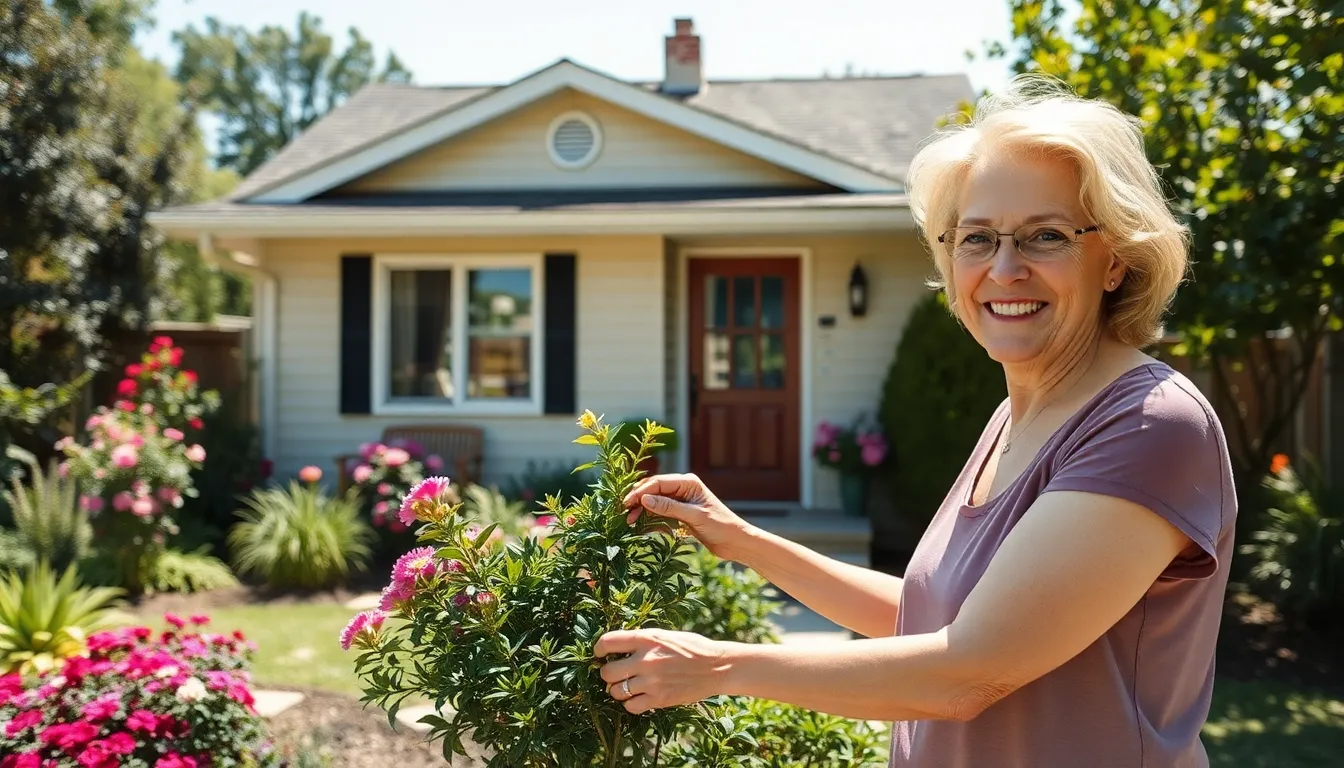In a world where minimalism and sustainability are gaining traction, downsizing housing has emerged as a popular choice for many. As people seek to simplify their lives and reduce their environmental footprint, smaller living spaces offer a practical solution. This trend isn’t just about reducing square footage; it encompasses a lifestyle shift that prioritizes experiences over possessions.
Downsizing can lead to financial freedom, lower maintenance costs, and a more manageable living environment. Whether it’s empty nesters looking to embrace a new chapter or young professionals seeking affordability, the benefits of smaller homes are hard to ignore. This article explores the motivations behind this movement and the various options available for those ready to make the leap into a cozier, more intentional way of living.
Table of Contents
ToggleWhat Is Downsizing Housing?
Downsizing housing refers to the process of moving from a larger residence to a smaller one. This transition often aligns with a desire for simpler living and lower costs. Individuals may choose to downsize for various reasons, including financial savings, reduced upkeep, and a desire for a more sustainable lifestyle.
People pursuing downsizing often seek homes that require less maintenance and are easier to manage. Smaller spaces, such as apartments or tiny houses, provide an opportunity for minimalist living, allowing individuals to focus on experiences rather than possessions. This approach aligns with the principles of sustainability, reducing environmental impact through less energy consumption and resource usage.
Demographics interested in downsizing include empty nesters seeking to reduce their living expenses and space requirements after children move out. Young professionals often look for flexible, affordable housing options that align with their dynamic lifestyles. Downsizing can also appeal to retirees wishing to simplify their lives while maintaining mobility.
Overall, downsizing housing represents a shift toward intentional living. It encourages individuals to evaluate their needs and make choices that enhance their quality of life.
Benefits of Downsizing Housing


Downsizing housing offers numerous advantages. It significantly impacts financial stability, lifestyle management, and environmental sustainability.
Financial Savings
Downsizing often translates into substantial financial savings. Monthly housing expenses decrease, leading to lower mortgage or rent payments. Home insurance costs typically reduce, with smaller properties requiring less coverage. Utility bills also decrease due to the lower square footage, resulting in savings on heating, cooling, and water usage. According to the National Association of Realtors, downsizers can save up to 30% on housing costs compared to larger homes. Additionally, the money saved can be redirected towards investments, travel, or retirement funds.
Reduced Maintenance
Reduced maintenance emerges as another critical benefit of downsizing. Smaller homes require less upkeep, including fewer rooms to clean and maintain. Lawn care and landscaping demands diminish, allowing more free time for other pursuits. Repair and renovation costs decrease, as smaller properties often come with fewer complications. A study by the American Society of Landscape Architects shows that homeowners spend about $500 annually on landscaping, which can drop significantly with smaller yards. Downsizers experience a more manageable lifestyle, enabling a focus on activities that enhance well-being and personal fulfillment.
Challenges of Downsizing Housing
Downsizing housing presents several challenges that individuals must navigate. Understanding these obstacles can aid in making informed decisions during the transition.
Emotional Attachment
Emotional attachment to possessions often complicates the downsizing process. Individuals frequently accumulate items with sentimental value, making it difficult to part with them. This attachment can create stress and reluctance, leading to indecision. Strategies such as creating a memory box or photographing items before disposal can help individuals cope with these emotions while still easing the burden of excess belongings.
Space Utilization
Efficient space utilization becomes critical in smaller living environments. Individuals may struggle to adapt their lifestyles to limited square footage, particularly when it comes to organizing belongings and optimizing furniture arrangements. Creative solutions, such as multi-functional furniture and vertical storage systems, can maximize available space. Incorporating decluttering sessions encourages a mindset shift and promotes a more functional living area, thereby addressing the challenge of adapting to downsized housing.
Tips for Successful Downsizing
Successful downsizing requires careful planning and organization. It often involves evaluating personal needs and simplifying belongings to create a functional, enjoyable living space.
Planning and Organization
Create a detailed plan before starting the downsizing process. The first step involves assessing current belongings and identifying items that are essential versus those that can be sold or donated. Use a spreadsheet to categorize items by room, which simplifies the evaluation. Set specific timelines for each room to stay on track. Involve family members in decision-making to ease emotional burdens and create accountability. Organizing belongings into keep, sell, donate, and discard piles can significantly streamline the process, leading to a smoother transition.
Choosing the Right Space
Selecting a suitable living space is crucial in the downsizing journey. Focus on lifestyle preferences and practical needs, like proximity to work, shopping, and public transportation. Evaluate different housing options, such as apartments, condominiums, or tiny homes, based on individual requirements. Consider factors like space layout, accessibility, and community amenities when assessing potential locations. A smaller space with an open floor plan can enhance functionality and provide an inviting atmosphere. Visit multiple properties to compare features and ensure the chosen space aligns with downsizing goals.





